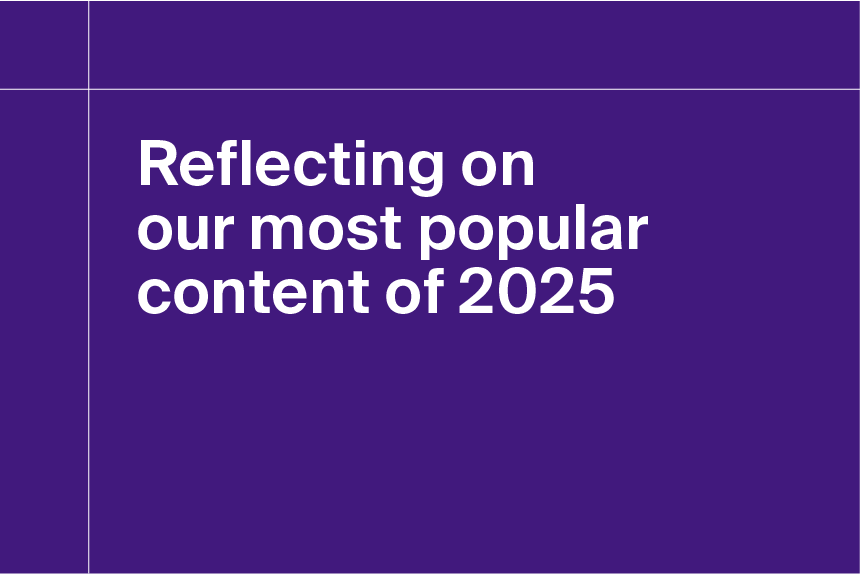The healthcare industry has always been data-intensive, but the emergence of electronic health records (EHRs), wearables, and other digital health tools makes data management more complex than ever. In the rapidly evolving healthcare landscape, healthcare organizations must leverage vast amounts of clinical and financial data to solve their business challenges.
However, simply amassing data is not enough; organizations need to develop a sophisticated data strategy to unlock the full potential of their data resources.
Step 1: Organize around a source of truth
Data holds immense value and presents a profound challenge within healthcare organizations. Currently, the healthcare industry is responsible for generating around 30% of the world’s data volume. It is projected that by 2025, the compound annual growth rate of healthcare data will reach 36%. This growth rate surpasses that of manufacturing by 6%, financial services by 10%, and media and entertainment by 11%.
Consolidating data acquisition, curation, and provisioning to create a single source of truth is the first step in developing a modern data strategy for healthcare organizations. By consolidating data from disparate sources, organizations can eliminate data silos, reduce redundancy, and establish a more comprehensive view of their operations.
Step 2: Establish uniform governance
To derive meaningful insights from consolidated data, healthcare organizations must establish uniform governance and glean data insights from analytic platforms. Data governance policies ensure that data is accurate, secure, and accessible. By establishing uniform governance policies, an organization can ensure that data is consistent across its departments and teams, regardless of the source.
Analytics platforms can provide healthcare organizations with a unified view of their data, allowing them to derive insights across multiple domains, including clinical, operational, and financial functions. These platforms enable organizations to perform complex analyses on large datasets, identify trends, and predict outcomes. For example, predictive analytics can identify patients at risk of hospital readmission, allowing providers to pursue proactive interventions that prevent readmissions and improve patient outcomes.
Step 3: Adopt modern data architecture
Traditional data warehouses are not designed to handle the volume, variety, and transmission velocity of data generated by today’s healthcare organizations. To keep pace with the increasing demand for data, healthcare organizations need to adopt modern data architectures with next-gen data management capabilities. This change often entails upgrading data warehouse concepts to data lakes and leveraging cloud-based computing for faster data mining, processing, and scalability.
Comprehensive and centralized data architectures should support all data formats, including structured, semi-structured, and unstructured data, along with data quality tools, processes, and partitioning.
Step 4: Implement an enterprise analytics hub
In order to convert data into meaningful analytics that can be used across an enterprise, healthcare organizations should consider centralizing or democratizing an enterprise analytics hub. The right platform should support a full spectrum of analytics use cases, including visual analytics.
Enterprise analytics hubs enable healthcare organizations to share data across domains and derive insights that can drive clinical, operational, and financial performance goals. For example, cross-domain scorecards can provide a holistic view of key performance indicators (KPIs) that help operational leaders make real-time decisions on patient care. Since the scorecard is based on structured and well-defined data (refer to the second and third steps above), there should be higher analytical quality and more time spent taking action rather than debating the data.
Step 5: Simplify and streamline data access
With so much data available, it can be challenging to enable access across a healthcare organization, especially if you have concerns about regulatory compliance or data breaches. To overcome these challenges, healthcare organizations can democratize data through APIs or other connectors to simplify data access and provision data based on role.
Simplified data access, often known as democratized data, facilitates knowledge sharing across teams. It also enables healthcare organizations to leverage analytics by unifying and securing a wide variety of data sources.
Advanced data: Support unstructured data processing
While it is preferable to have discrete data, there are many situations in healthcare where data is presented in unstructured formats, such as documents, images, audio files, and videos. Processing unstructured data presents unique challenges that can be overcome by leveraging modern techniques such as optical character recognition, imaging, genomics, natural language processing, and artificial intelligence.
If the steps outlined above are tackled appropriately, your organization should be able to unlock the full potential of unstructured data and incorporate new findings into your analyses.
Take the leap and modernize your data strategy (ideally sooner rather than later)
It’s estimated that healthcare data in the U.S. has exceeded 2,000 exabytes with growth outpacing that of many other industries. Additionally, healthcare data continues to be one of the most highly protected and regulated categories of data worldwide.
Considering the relative value and compliance requirements associated with healthcare data, it’s imperative that organizations of all sizes move to modernize their data strategy and adopt these recognized standards in data architecture, processing, and transformation.
Definitive Healthcare’s Atlas AI leverages claims, consumer, and reference and affiliations data from the Atlas Dataset to deliver advanced analytics that help your organization understand, compete, and win in the healthcare market. Want to see how your strategy, marketing, business development, or strategic finance teams can use our platform? Sign up for a free trial today.




